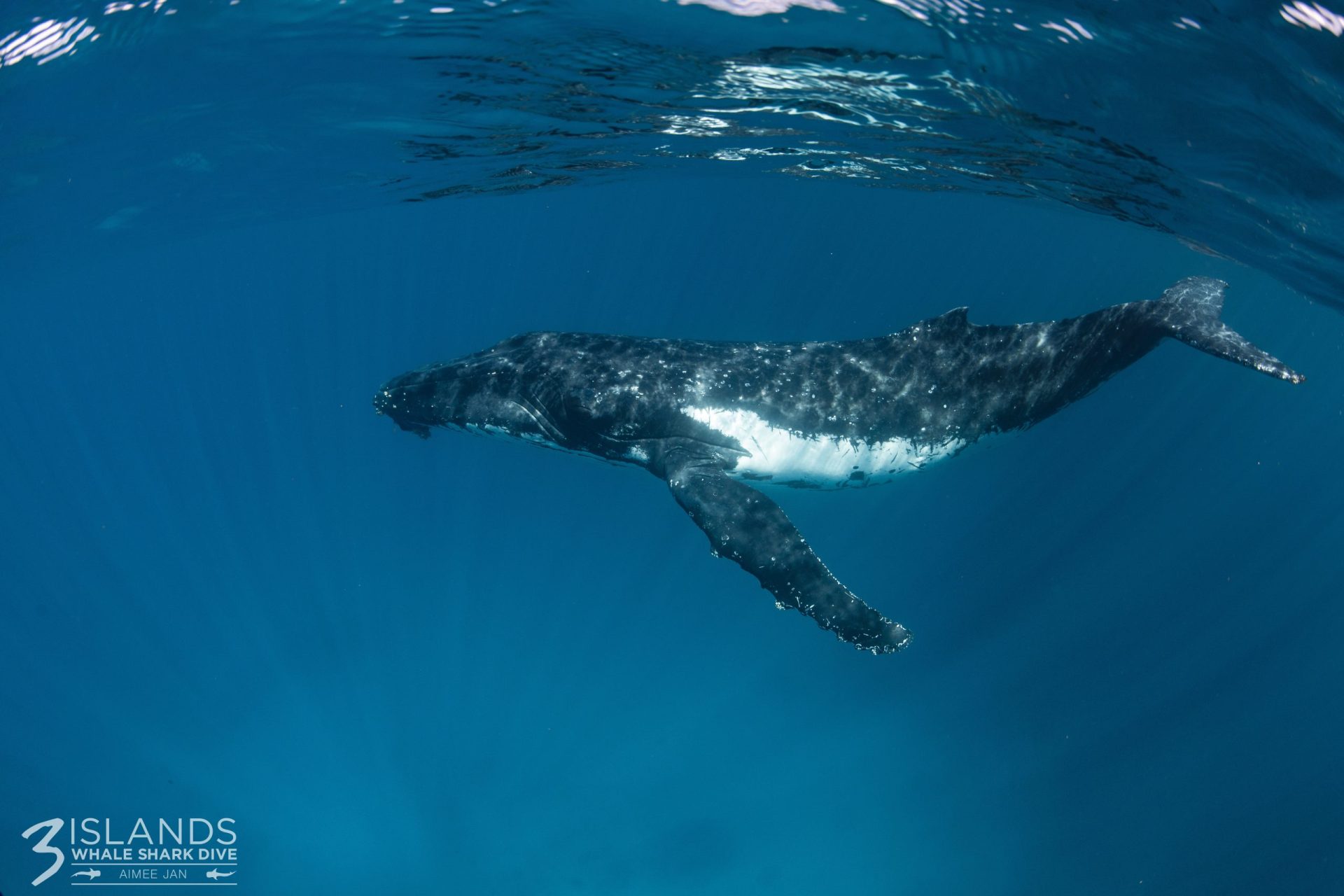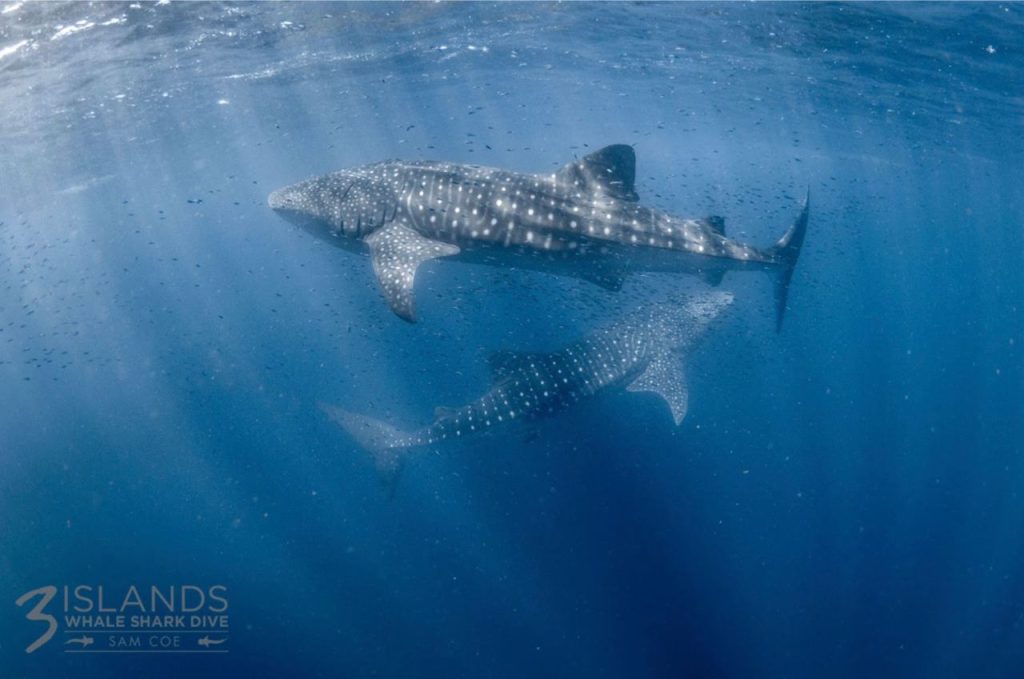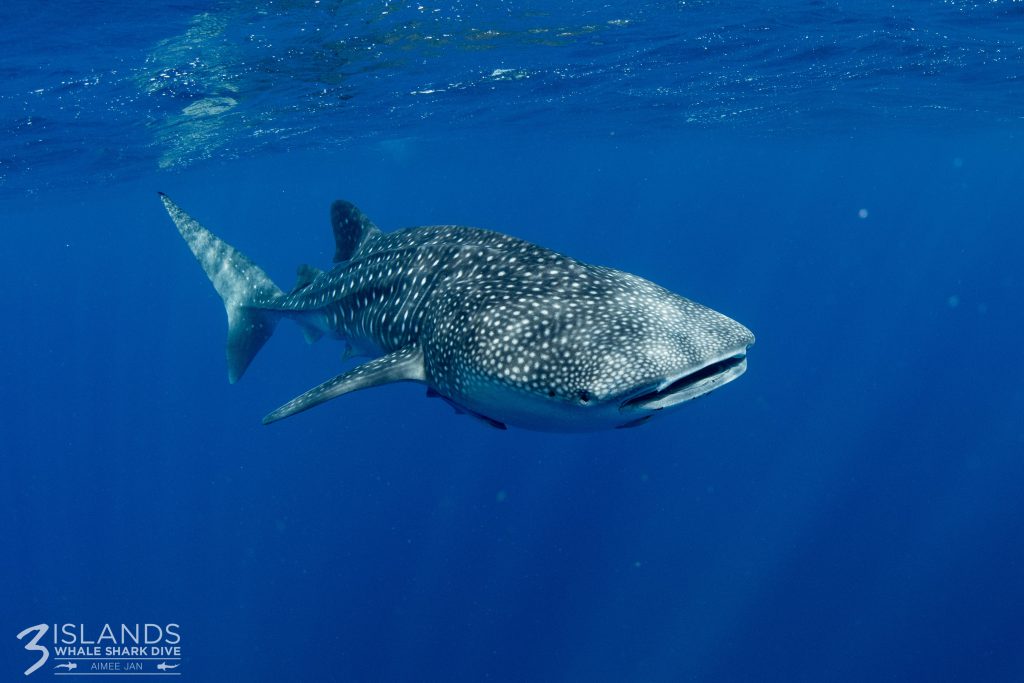The captivating journey of the humpback whale holds a mesmerising tale of resilience and survival, a cycle as old as the sea itself. Their annual migration, a feat that spans thousands of kilometres, is a spectacle of nature that continues to intrigue people all around the world. This majestic journey speaks volumes of their innate drive, their adaptation to the ever-changing marine environment, and their sheer determination to ensure the survival of their species.
Table of Contents
Exmouth plays a pivotal role in this fascinating story, acting as a migratory waypoint for the humpback whales. Located on Australia's Western coast, Exmouth provides a crucial resting and socialising spot during their long voyage. So, let's dive deep and learn about the amazing migration of humpback whales and Exmouth's special part in it!
Humpback Whales: Quick Overview
Humpback whales are truly impressive sea creatures! They are one of the largest types of whales, growing to around 12-16 metres long. You can recognise humpback whales by their distinctive hump in the front of their small dorsal fin and their habit of arching their backs prominently before diving deep into the water.
And did you know that humpback whales are famous singers? During migration, they make unique sounds, like songs, that can last for up to 20 minutes. It's believed that they use these songs to communicate with each other and match singers on migration to a breeding population. So, humpback whales are not only great swimmers but also fantastic singers of the sea!
In addition to their notable physical features and vocal prowess, humpback whales have a remarkable way of hunting called 'bubble net feeding'. This highly synchronised strategy involves a group of whales swimming in a shrinking circle and blowing bubbles below a school of prey. This curtain of bubbles confuses and traps the prey, allowing the whales to easily swim through with their mouths open, scooping up their meal. During their peak feeding times, an adult humpback whale can consume up to 2,000-2,500 kilograms of food per day. Their feeding techniques, combined with their vocal behaviours, make humpback whales one of the most interesting and diverse creatures in our oceans!
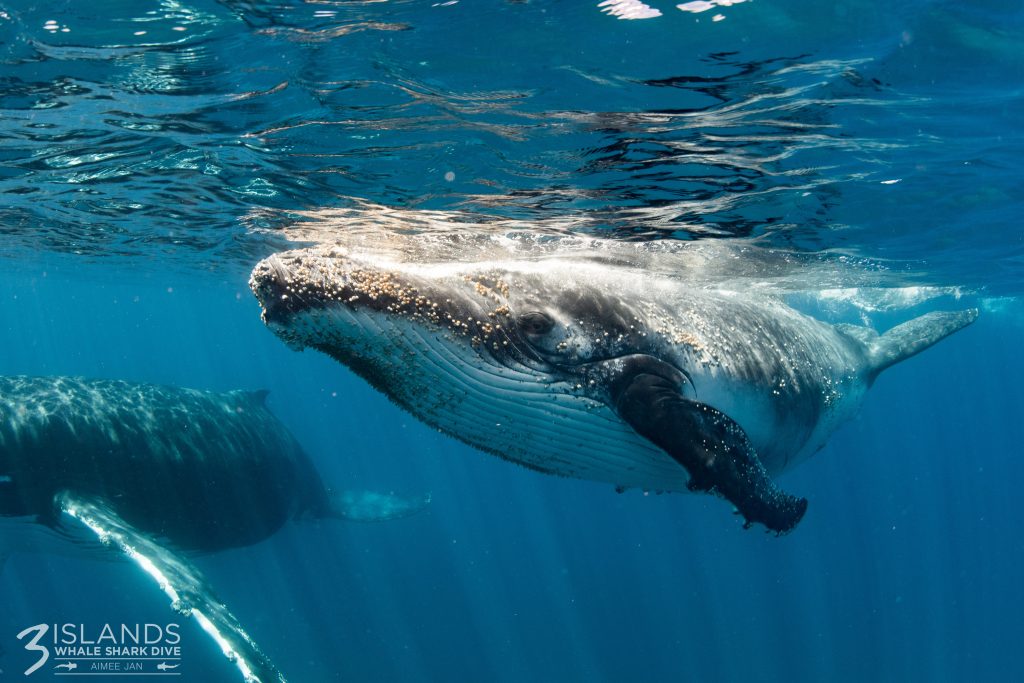
The Phenomenon of Humpback Whale Migration
Migration is a long journey that many animals partake in every year for different reasons. For the southern hemisphere humpback whales, they often migrate to find food or to have their babies in safer, warmer waters.
Humpback whales typically spend their summers in cold, Antarctic waters where food is plentiful, which is considered their 'feeding grounds'. During this time they focus on eating enormous amounts of krill and small fishes to build up a thick layer of fat called blubber.
Although the cold waters are food-rich for the humpback whales, it is not suitable for birthing due to potential threats like orcas and the harsh climate. The tropical waters, on the other hand, offer a safe environment for newborn calves, even if food is scarce. Hence, after birthing and a brief nurturing period, the humpback whales start their return to the food-abundant polar regions and start the cycle all over again.
Surprisingly, not all humpback whales migrate up the west coast of Australia. The whales split south of Australia, beginning their 3-month journey along two distinct paths. Most of the humpback whales swim along the west coast of Australia, reaching Exmouth and as far as the Kimberley region. Whereas the rest of the humpback whales head up the east coast of Australia and swim past the Great Barrier Reef.
The Exmouth Connection to Humpback Whale Migration
Exmouth is situated at the northern gateway to Australia's iconic Ningaloo Reef. This makes it the perfect location in Western Australia to spot humpback whales migrating north as they swim along the western coast. In fact, the Exmouth Gulf boasts the Southern Hemisphere's most concentrated population of humpback whales during their impressive 5000 kilometre (each way!) migration from Antarctica. While travelling the 'humpback highway', roughly 40,000 humpback whales travel along the Ningaloo coastline on their way to their breeding grounds off the Kimberley coast.
Because of this, whale-watchers especially love humpback whales. Humpback whales are often spotted close to the shores of Exmouth and are known for their playful behaviours on the surface. They frequently leap out of the water, a behaviour called 'breaching', and slap the water's surface with their large fin and tails.
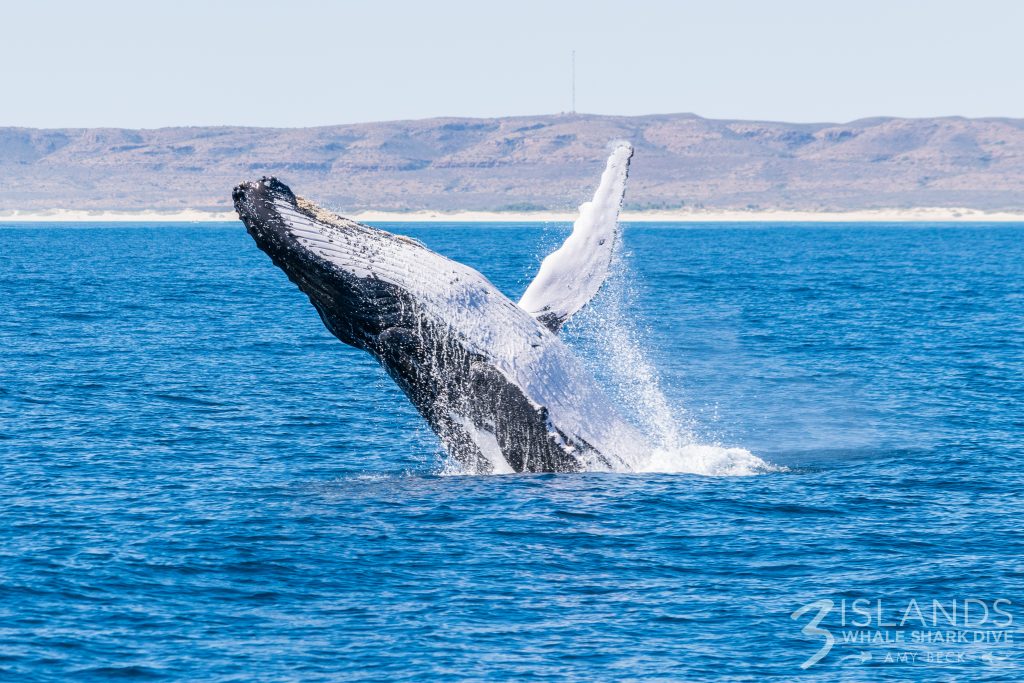
Swim with the Humpback Whales in Exmouth
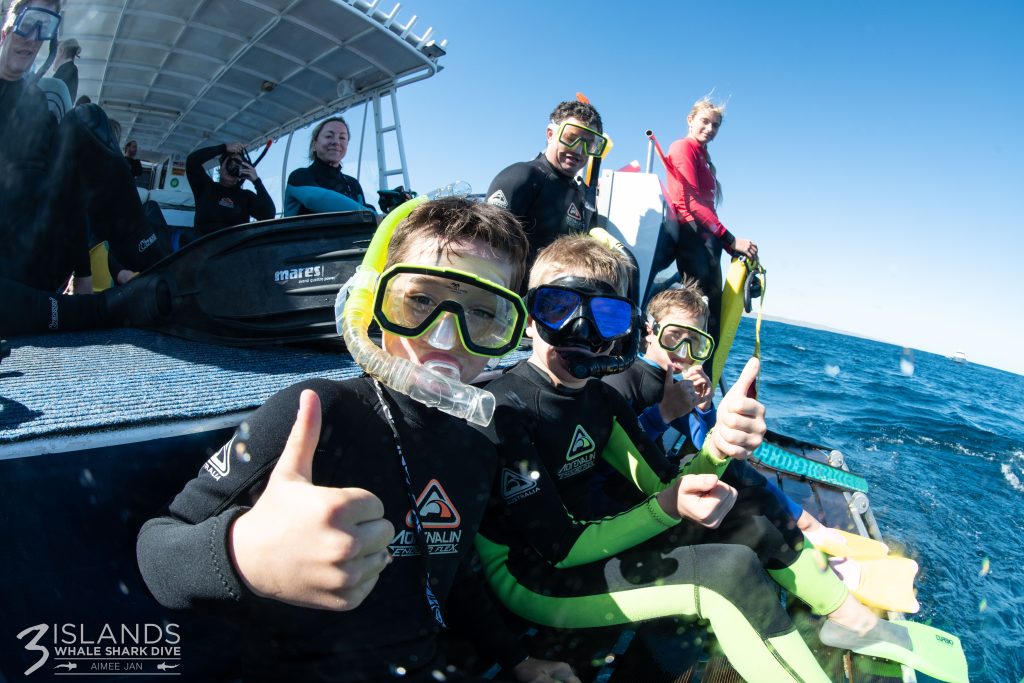
If you want to get up close and personal with humpback whales, our tour at Ningaloo Reef is an unparalleled choice for adventure-seekers. Ningaloo Reef boasts one of the world's densest populations of migrating humpback whales and is among the rare places in the world where it's legal to swim alongside them.
See these majestic creatures glide past the West Australian coast from the intimate vantage point of our charter boats. With the guidance of our overhead spotter planes (which greatly increases your chances of swimming with a humpback whale during the tour), immerse yourself in the turquoise waters, snorkel beside these gentle giants, and be enchanted by their beautiful melodies. It's not just a tour; it's the ultimate wildlife encounter. Secure your spot now on our humpback whale tour in Exmouth for an unforgettable experience!
Dive into the ultimate wildlife encounter and swim with humpback whales in Exmouth. Secure your spot with Three Islands Whale Shark Dive for an unforgettable experience.
More...
Whale Shark Breeding Facts
Whale sharks present a fascinating mystery that intrigues marine biologists and ocean lovers alike. These giant fish, known for their peaceful nature and filter-feeding habits, navigate the warm seas with a grace that belies their immense size Table of Content What is Known About Whale Shark Reproduction? How Many Pups Do Whale Sharks Have? How…
Whale Shark: Whale or Shark?
The whale shark (Rhincodon typus) stands as a majestic giant in the marine world. They possess a unique blend of characteristics that blur the traditional lines between the mammoth, filter-feeding whales and their more ferocious shark cousins. In this exploration, we’ll look into the intriguing world of whale sharks, unravelling the mysteries of their nature,…


